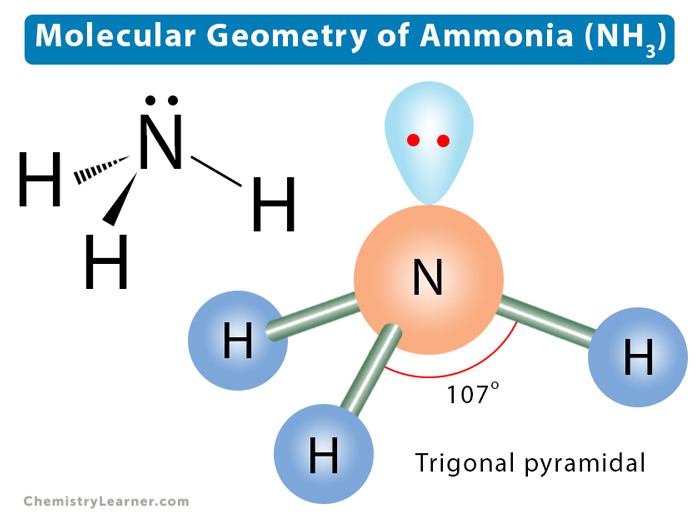Molecular Geometry of Ammonia (NH3)
The ammonia (NH3) molecule consists of one nitrogen (N) atom and three hydrogen (H) atoms. The nitrogen atom has five valence electrons and requires three more to complete its octet. The hydrogen has one valence electron and requires one more to fill its 1s valence shell. Lewis structure shows that nitrogen and hydrogen will form a single covalent bond by sharing electrons. Overall, ammonia has three N-H bonds and one lone pair of electrons on nitrogen [1-4].
The bond pairs work differently from lone pairs. Both nuclei attract the bond pairs. Due to the polarity of the N-H bond, it will be closer to nitrogen than hydrogen. On the other hand, the lone pair will be closer to its atom’s nucleus. The effective solid angle will be greater than the bond pairs’ solid angle.
VSEPR theory is the most efficient method to study molecular shape. The electron geometry of ammonia is tetrahedral. Due to the lone pair, its molecular geometry is a distorted tetrahedral. According to VSEPR theory, the lone pair will exert a repulsive force on the bond pair. The electronic repulsion decreases according to the following order.
lone pair – lone pair > lone pair-bond pair > bond pair-bond pair
As a result, the N-H bonds will bend toward each other and away from the lone pair. Ammonia will acquire a trigonal pyramidal shape with a bond angle of 107°. This angle is less than the ideal tetrahedral bond angle of 109°. The VSEPR notation is AX3E1.
